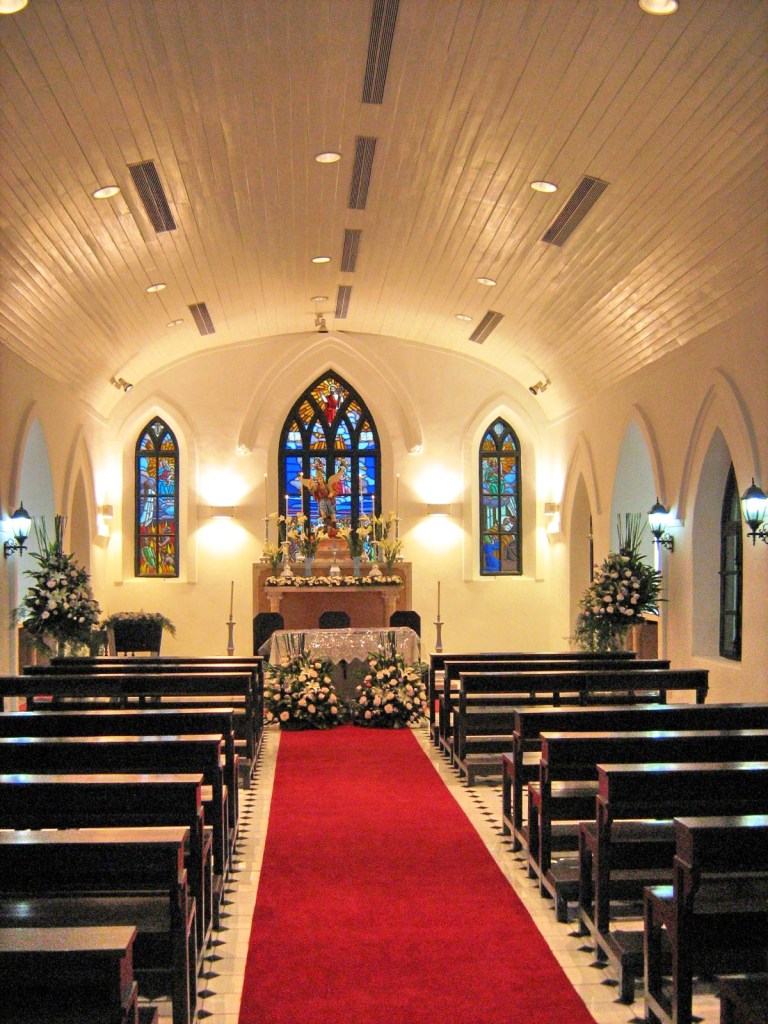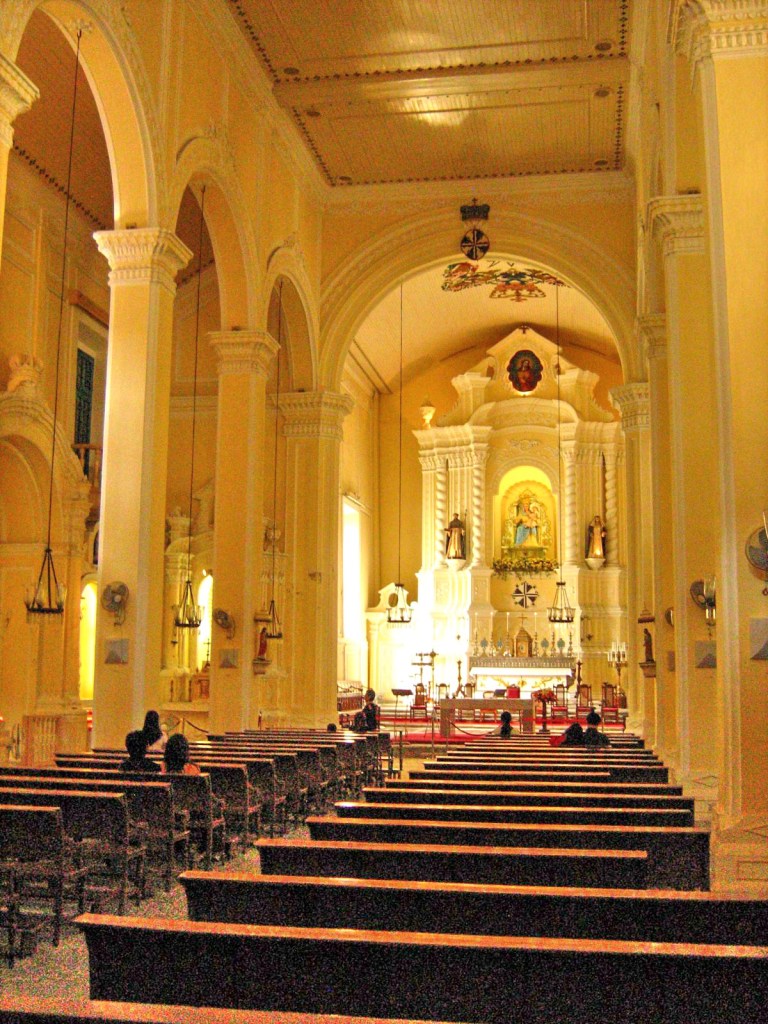From Macau Cathedral, Jandy, Cheska and I then proceeded to St. Michael Cemetery, Macau’s largest Catholic cemetery. This cemetery, located northeast of Mount Fortress, along a small and quiet street between Ruins of St. Paul’s and Guia Hill, contains lavishly decorated tombstones and sepulchers that can only be described as Baroque ecclesiastical works of art, combining Chinese and European motifs, an interesting example of Macau’s cultural diversity.
Near the cemetery’s main entrance is the doll-sized and charming Church of St. Michael. Dating back to 1875, tt has a tiny choir loft, pretty porticoes, pastel pea green and white walls and beautiful stain glass windows.
St. Michael Cemetery and Chapel: 2A Estrada do Cemitério, Northern Macau Peninsula. Open 8 AM-6 PM.
.






































